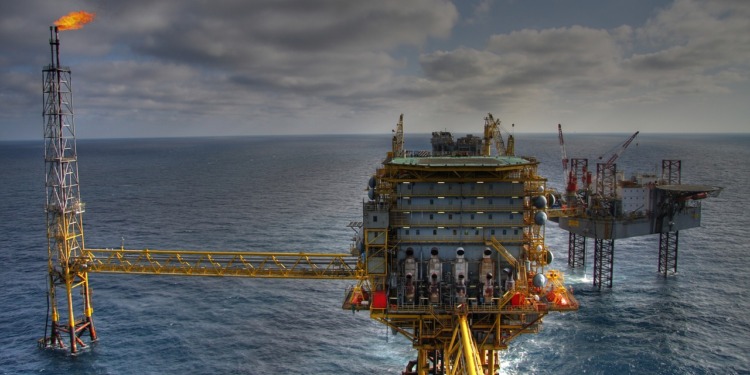Climate Action 100+, the “world’s largest investor engagement initiative on climate change” as the group describes itself, has released its latest assessment of ten major oil and gas companies from Europe and North America: Exxon Mobil, Shell, Chevron, TotalEnergies, ConocoPhillips, BP, Occidental Petroleum, Eni, Repsol S.A., and Suncor Energy.
The assessments were conducted using the Net Zero Standard for Oil & Gas, a framework developed by IIGCC to “help investors assess the alignment of oil and gas companies’ transition plans with a 1.5 ºC climate scenario.”
They were carried out by the Transition Pathway Initiative Centre (TPI Centre) to provide investors with a nuanced understanding of each company’s approach to mitigating climate risks while steering towards net-zero emissions, with the scrutinized companies undergoing rigorous evaluations across various metrics encompassing production plans, methane commitments, climate disclosure, and “strategies to diversify into low carbon activities.”e
“The oil and gas sector typically represents the largest and most concentrated source of transition risk in investors’ portfolios. By showing the wide variation in the quality of companies’ disclosure and diversification strategies, this analysis enables investors to see where this risk is most acute,” said Dan Gardiner, head of the research group that developed the Net Zero Standard for Oil & Gas (the IIGCC).
“While a few companies have made progress, most are failing to set out even a basic transition strategy,” Gardiner asserts.
Insufficient Disclosure Raises Red Flags
One glaring revelation from the assessments is that the disclosure practices among the evaluated companies remain “insufficient for investors to accurately gauge transition risk.”
Despite several firms professing commitments to achieve net zero emissions, critical details such as carbon capture strategies and upstream production plans remain shrouded in ambiguity, according to Climate Action 100+’s assessment. This lack of transparency makes it difficult for investors to accurately assess transition risks and understand the feasibility of companies’ net-zero targets.
The assessment found that the evaluated companies only met 19% of the sector-specific metrics in the Net Zero Standard.
Encouraging Best Practices
Amidst the sea of inconsistency, the assessment found glimpses of encouragement: One standout performer met 52% of the assessed metrics, with “comparatively strong performances” in methane reduction, production optimization, and engagement with climate solutions (where it met 81% of the metrics).
As Climate Action 100+ notes, this “good practice can be adopted by peers and encouraged by investors.”
The organization however also concludes that none of the companies “can be described as aligned with the International Energy Agency’s net-zero scenario,” with the degree of misalignment “varying substantially.”
Related Articles: A Just Transition to a Zero-carbon World Is Possible. Here’s How. | Europe’s Transition to Electric Vehicles: How It’s Going, and What Lies Ahead | Morningstar Introduces Low Carbon Transition Leaders Indexes | The Countries Leading the Way on Quitting Coal | Big Oil Testifies in Court for Decades-Long Climate Denialism | Climate and Energy: Shifting the Trillions, but in the Right Direction | The Village That Stood up to Big Oil – and Won
Regional Disparities
A notable trend observed in the assessments is the disparity between European and North American companies. European firms outshine their North American counterparts in disclosure transparency, target alignment, and investment in climate solutions.
American companies, meanwhile, have minimal diversification plans into low-carbon energy production and only met 3% of the climate solutions metrics.
Diverse Transition Strategies
The assessments unveil a mosaic of approaches undertaken by companies to navigate the energy transition. While nine of the 10 companies have put in place net zero targets for operational emissions, only two companies have set “convincing” strategies for cutting methane, a major contributor to operational emissions.
There’s also one company that “appears to be relying exclusively on neutralisation, whereas others see it as appropriate for residual emissions.”
Moreover, the plans of American companies diversifying into low-carbon activities focus exclusively on fuels rather than renewable electricity, the assessment notes.
“The inaugural assessment of the Net Zero Standard for Oil and Gas delivers a clear message: while certain companies showcase commendable strides towards robust climate strategy, the overall industry landscape remains alarmingly underprepared for the transition,” said Jared Sharp, Project Lead for TPI Centre’s Net Zero Standards. “On average, only 19% of metrics are met by the companies assessed. While the results are sobering, they underscore the urgency for more action. It is imperative for both investors and industry to pivot towards strategies that minimise transition risk and drive innovation for a viable energy future.”
Editor’s Note: The opinions expressed here by the authors are their own, not those of Impakter.com — In the Cover Photo: An offshore oil rig. Cover Photo Credit: Needpix.










